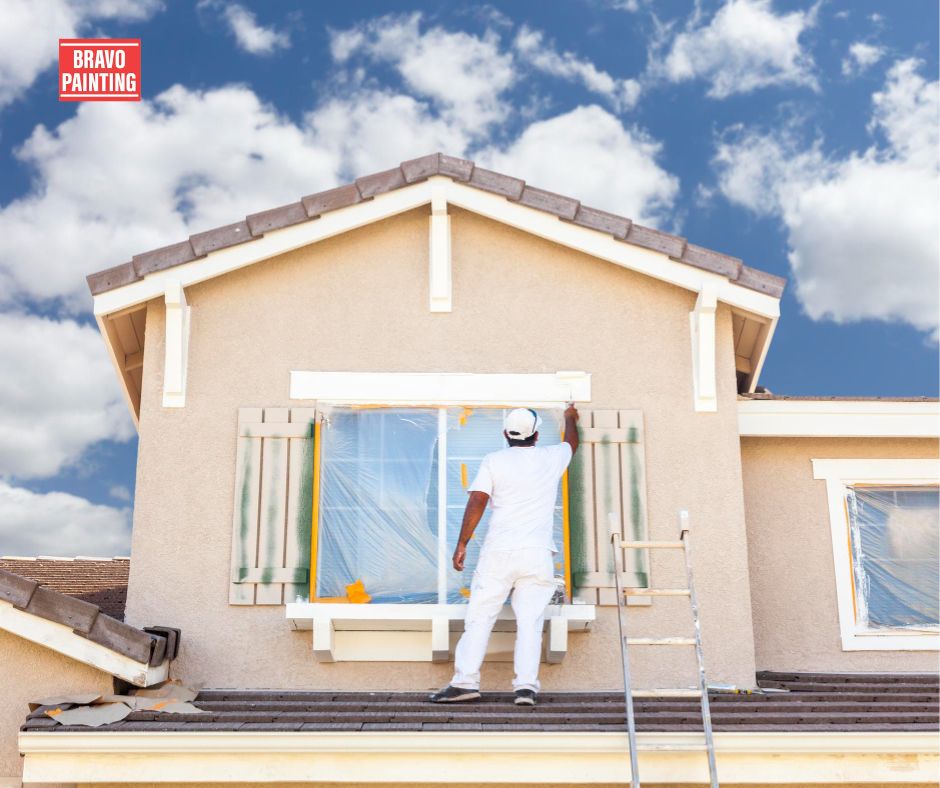Walls are not only structural components of a building; they also play a crucial role in defining the ambiance and aesthetic appeal of a space.
Whether it’s the cozy warmth of a living room or the serene tranquility of a bedroom, clean and well-maintained walls are essential for creating a welcoming environment.
However, maintaining pristine walls requires regular care and attention.
In this comprehensive guide, we’ll explore everything you need to know about cleaning and maintaining your walls to keep them looking fresh and beautiful for years to come.
Understanding Wall Materials:
Before diving into the cleaning and maintenance techniques, it’s essential to understand the different types of wall materials commonly used in homes:
Painted Walls: Paint is one of the most popular wall finishes, offering versatility in color and texture.
Painted walls require regular cleaning to remove dust, dirt, and stains without damaging the paint surface.
Wallpaper: Wallpaper adds pattern and texture to walls, but it can be delicate and susceptible to damage if not properly maintained. Cleaning wallpaper requires gentle methods to avoid tearing or fading.
Plaster Walls: Plaster walls provide a classic, elegant look but are prone to cracking and chipping over time.
Proper maintenance involves repairing any damage and periodically repainting or re-plastering to keep them looking smooth and pristine.
Drywall: Drywall is a common wall material in modern construction, known for its affordability and ease of installation.
Cleaning drywall involves removing stains and patching any holes or dents to maintain a smooth surface.
Now that we’ve covered the basics let’s delve into the specifics of cleaning and maintaining each type of wall material:
Cleaning Painted Walls:

Painted walls can accumulate dust, dirt, and stains over time, detracting from their appearance. Here’s how to clean painted walls effectively:
Dusting: Begin by dusting the walls with a microfiber cloth or a soft brush attachment on a vacuum cleaner.
This will remove surface dust and prevent it from smearing during cleaning.
Washing: Prepare a gentle cleaning solution by mixing mild dish soap or a specialized wall cleaner with warm water.
Avoid using harsh chemicals or abrasive cleaners, as they can damage the paint finish.
Spot Cleaning: For stubborn stains or marks, spot clean with a slightly dampened sponge or cloth.
Gently dab the stain without scrubbing to avoid removing the paint.
Rinse and Dry: After cleaning, rinse the walls with clean water to remove any soapy residue.
Use a soft, dry cloth or towel to pat the walls dry, ensuring no moisture is left behind.
Maintaining Wallpaper:
Wallpaper adds personality and charm to any room but requires careful maintenance to preserve its appearance.
Follow these steps to clean and maintain wallpaper:
Dusting: Use a soft brush attachment on a vacuum cleaner or a microfiber cloth to gently remove dust and debris from the wallpaper surface.
Spot Cleaning: For minor stains or marks, dab the affected area with a clean, damp sponge or cloth.
Avoid using excessive moisture, as it can cause the wallpaper to peel or warp.
Avoid Abrasive Cleaners: Harsh chemicals and abrasive cleaners can damage wallpaper, so it’s best to stick to mild cleaning solutions and gentle techniques.
Professional Cleaning: If your wallpaper is heavily soiled or stained, consider hiring a professional wallpaper cleaner to ensure thorough and safe cleaning.
Maintaining Plaster Walls:
Plaster walls require regular maintenance to keep them looking smooth and flawless.
Follow these tips to care for plaster walls:
Patching: Inspect the walls regularly for any cracks, chips, or dents.
Use a patching compound or spackling paste to fill in any imperfections, then sand the area smooth once it’s dry.
Repainting: Over time, plaster walls may develop discoloration or fading.
Periodically repaint the walls with a high-quality paint to refresh the appearance and protect the surface.
Preventative Measures: Avoid excessive moisture and protect plaster walls from impact or pressure to minimize the risk of damage.
Professional Maintenance: For extensive damage or renovation projects, consult a professional plasterer to ensure proper repair and maintenance.
Maintaining Drywall:
Drywall is durable and relatively easy to maintain with proper care.
Follow these guidelines to keep your drywall walls in top condition:
Patching Holes: Fill in any holes or dents in the drywall with spackling paste or joint compound.
Sand the patched area smooth and repaint if necessary to blend with the surrounding wall.
Cleaning: Dust the drywall regularly with a microfiber cloth or vacuum cleaner to prevent dust buildup.
For deeper cleaning, use a mild detergent solution and a soft sponge to gently wash the walls.
Avoid Excessive Moisture: Drywall is susceptible to water damage, so be cautious when cleaning near sinks, showers, or other moisture-prone areas.
Regular Inspections: Periodically inspect the drywall for signs of water damage, mold, or mildew.
Address any issues promptly to prevent further damage and maintain the integrity of the walls.
Regular Inspections: Make it a habit to inspect your walls periodically for any signs of damage, such as cracks, peeling paint, or water stains.
Addressing these issues early can prevent further deterioration and costly repairs down the line.
Preventative Measures: Take proactive steps to protect your walls from potential damage.
Install corner guards to prevent dents and scratches from furniture, use protective mats under heavy objects, and be mindful of hanging objects to avoid unnecessary holes or damage.
Proper Ventilation: Maintain adequate ventilation in your home to prevent moisture buildup, which can lead to mold and mildew growth on your walls.
Use exhaust fans in kitchens and bathrooms, open windows to promote airflow, and consider using a dehumidifier in damp areas.
Professional Help: For complex wall maintenance tasks or repairs beyond your expertise, don’t hesitate to seek assistance from professionals.
Whether it’s hiring a painter to touch up faded paint or consulting with a contractor for structural repairs, investing in expert help can ensure the longevity and integrity of your walls.
Regular Cleaning Schedule: Establish a routine cleaning schedule for your walls to prevent dirt and grime from accumulating.
Depending on your household’s needs and lifestyle, aim to clean your walls every few months or as needed to maintain a fresh and inviting atmosphere.
Documentation: Keep records of any repairs, maintenance, or renovations performed on your walls.
This documentation can be valuable for future reference and may be required for insurance claims or when selling your home.
Conclusions
Your walls are more than just barriers; they’re canvases that contribute to the overall aesthetic and ambiance of your living space.
By implementing the strategies outlined in this guide, you can ensure that your walls remain in optimal condition, enhancing the beauty and comfort of your home for years to come.
From regular cleaning and maintenance to proactive measures and professional assistance, investing time and effort into caring for your walls is a worthwhile endeavor that will pay dividends in the long run.
With proper care and attention, your walls will continue to be a source of pride and joy, serving as the backdrop for countless cherished memories in your home.
For professional painting services to rejuvenate your walls, visit Bravo Painting today!
FAQs
How often should I clean my walls?
The frequency of wall cleaning depends on factors such as household traffic, pets, and cooking habits. Generally, aim to clean your walls every few months or as needed to maintain their appearance.
Can I use regular household cleaners on all types of walls?
To avoid damage, it’s essential to use appropriate cleaners for each wall material. While mild dish soap or specialized wall cleaners work well for painted walls, harsh chemicals should be avoided, especially on delicate surfaces like wallpaper.
What’s the best way to remove stains from painted walls?
For stubborn stains on painted walls, start with a mild cleaning solution and gently dab the area with a slightly dampened sponge or cloth. Avoid scrubbing vigorously to prevent damaging the paint finish.
How can I prevent damage to plaster walls?
Regular inspections for cracks, chips, and dents are crucial for maintaining plaster walls. Promptly patching any imperfections and avoiding excessive moisture can help prevent further damage.
Is it safe to clean wallpaper with water?
While it’s generally safe to clean wallpaper with water, it’s essential to use minimal moisture to prevent peeling or warping. Spot cleaning with a damp sponge or cloth is recommended, avoiding excessive saturation.
What should I do if I notice water damage on my walls?
Addressing water damage promptly is crucial to prevent further deterioration. Identify the source of the moisture, repair any leaks, and consult a professional if the damage is extensive.
Can I repaint my walls myself, or should I hire a professional?
Repainting walls can be a DIY project for minor touch-ups, but for larger areas or intricate designs, hiring a professional painter is recommended to ensure a high-quality finish.
How can I maintain proper ventilation to prevent mold growth on walls?
Maintaining adequate airflow through your home with exhaust fans, open windows, and dehumidifiers can help prevent moisture buildup, reducing the risk of mold and mildew growth on walls.
What are some preventative measures to protect walls from damage?
Installing corner guards, using protective mats under heavy objects, and being mindful of hanging objects can help prevent dents, scratches, and unnecessary holes in walls.
Why is documentation of wall maintenance important?
Keeping records of repairs, maintenance, and renovations performed on your walls can be valuable for future reference, insurance claims, or when selling your home. It provides a history of care and maintenance that can increase the property’s value.
Blog, Indoor Painting

